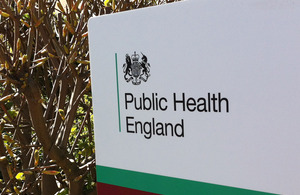Preventing amputations major concern as diabetes numbers rise
New data reveals overall number of amputations increasing with white males having the highest rate.

New data from the Diabetes Foot Care Profiles, published by PHE’s National Cardiovascular Intelligence Network, shows that the number of major lower limb amputations (above the ankle) continues to rise – with 7,545 major amputations over the past 3 years between 2015 to 2018, compared with 6,957 between 2012 to 2015.
The overall number of major amputations is increasing, as the number of people with diabetes rises, but the rate among people with diabetes is not significantly increasing.
The data also shows that while the risk of diabetes is higher in some ethnic groups, especially those from South Asia, the rate of major amputations caused by diabetes is greatest in white males. The data also shows that there is significant variation in the risk of amputation across the country.
Type 2 diabetes is a preventable condition and even those living with the disease can make simple lifestyle changes that will help them stay well and even potentially reverse the disease.
To help reach more people at high risk of developing type 2 diabetes, the NHS Long Term Plan, launched in January, included a commitment to double the NHS DPP over the next 5 years.
This means the programme – delivered by Public Health England, NHS England and Diabetes UK – will support 200,000 people each year to reduce their risk of developing type 2 diabetes, which can be prevented by better lifestyle choices: eating a healthy balanced diet, maintaining a healthy weight and being physically active.
Top findings from today’s data show that during the 3-year period of 2015 to 2016 up to 2017 to 2018:
- patients from England had 147,067 hospital stays for diabetic foot disease
- the average length of stay in hospital was 8 days and the total number of days spent in hospital for diabetic foot disease was 1,826,734
- 85,837 individual patients were admitted for foot disease and 33% of these had more than one stay over the 3 years
- the rate of major amputations was greatest among men (male rate 10.5/10,000 population-years compared with females 4.9; and the white population rate of 9.6/10,000 and non-white 2.6)
The prevalence of type 2 diabetes is set to rise from 3.9 million (in 2017) to 4.9 million by 2035, equivalent to around 9.7% of the adult population. Approximately 90% of people with diabetes have type 2.
Dr Jenifer Smith, Programme Director at PHE for the NHS Diabetes Prevention Programme, said:
It’s a tragedy that so many people are unnecessarily having to face the life-changing consequences of diabetes, such as amputations. Survival rates and quality of life for people following such major surgery can often be poor. This shouldn’t be happening when the condition is preventable.
The NHS Diabetes Prevention Programme has been hugely successful in providing help and support to those at risk of developing the condition, which is why it’s now being doubled in size. It’s important that those providing the service need to work closely with their local public health teams who know their community, to ensure they’re reaching and meeting the needs of those at greatest risk.
Type 2 diabetes remains the greatest health challenge in this country and many adults are in danger of developing this deadly but preventable disease.
The goals of the NHS DPP are to reduce the incidence of type 2 diabetes; reduce the incidence of complications associated with type 2 diabetes (heart, stroke, kidney, eye and foot problems related to diabetes); and reduce health inequalities associated with incidence of type 2 diabetes, over the longer term.
One in six hospital beds are occupied by someone with type 2 diabetes and 22,000 people die early every year in England as a result of the disease.
Background
More information is available from PHE’s National Cardiovascular Intelligence Network’s Diabetes Foot Care Profiles.
UKHSA press office: Shaun Whelan